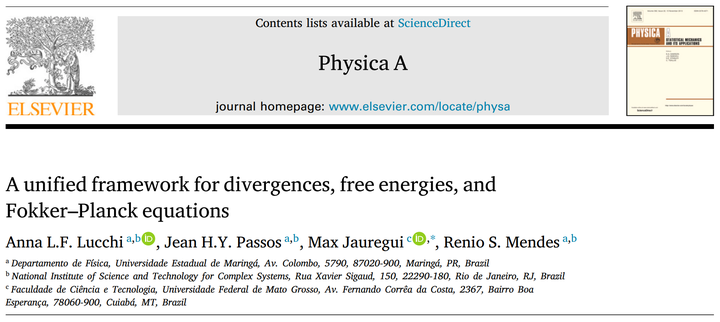
Abstract
Many efforts have been made to explore systems that show significant deviations from predictions related to the standard statistical mechanics. The present work introduces a unified formalism that connects divergences, generalized free energies, generalized Fokker–Planck equations, and H-theorem. This framework is applied here in a range of scenarios, illustrating both established and novel results. In many cases, the approach begins with a free energy functional that explicitly includes a potential energy term, leading to a direct relation between this energy and the stationary solution. Conversely, when a divergence is used as free energy, the associated Fokker–Planck-like equation lacks any explicit dependence on the potential energy, depending instead on the stationary solution. To restore a potential-based interpretation, an additional relation between the stationary solution and the potential energy must be imposed. This duality underlines the flexibility of the formalism and its capacity to adapt to systems where the potential energy is unknown or unnecessary.